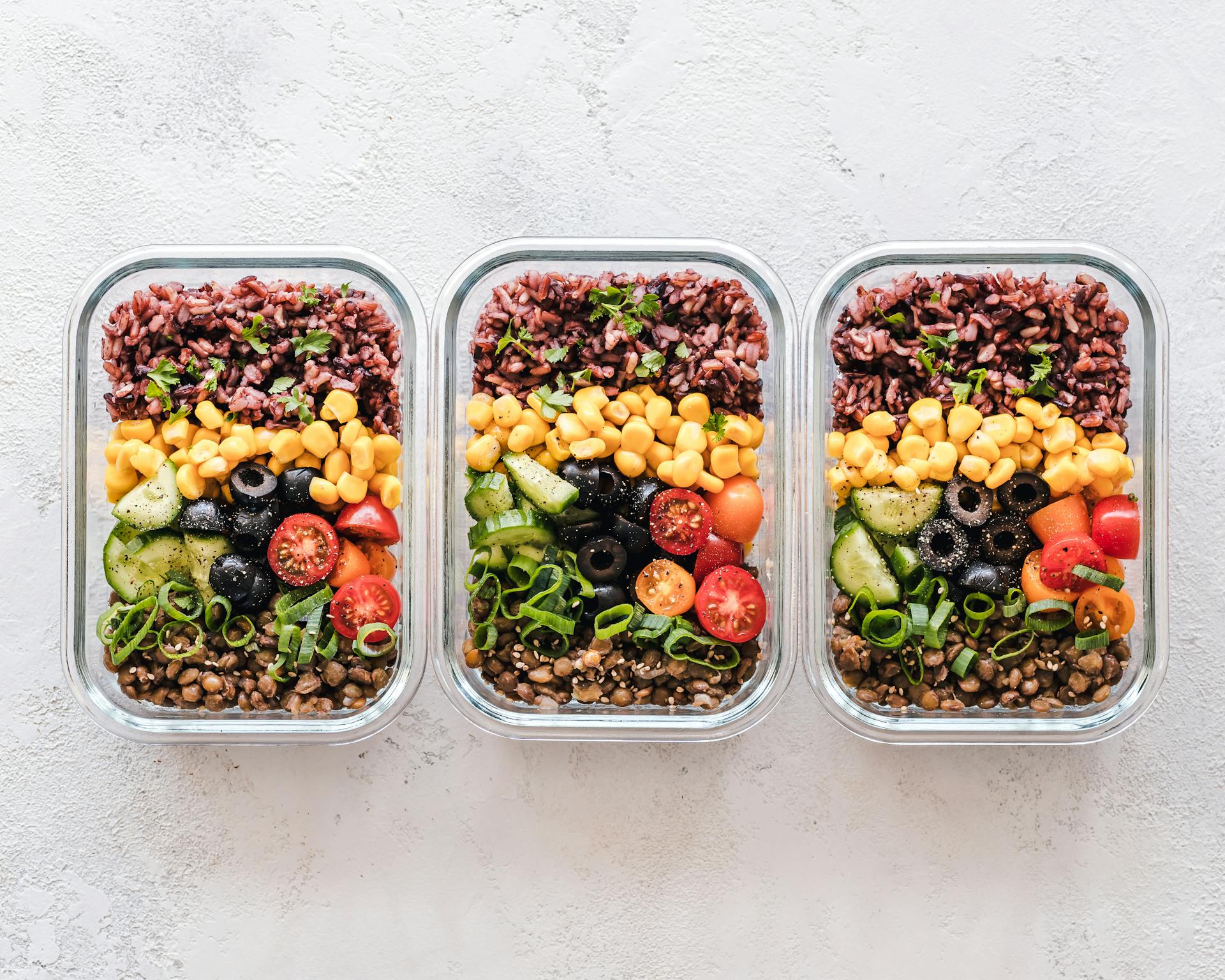
Food processing is the set of methods and techniques used to transform raw ingredients into food or to transform food into other forms for consumption by humans or animals either in the home or by the food processing industry.
There are several different types of food processing, which generally can be grouped into two main categories:
1) Primary Processing: This type of food processing occurs immediately after the food is harvested. Primary processing includes such steps as cleaning, grinding, shelling, and peeling.
2) Secondary Processing: This type of food processing occurs after the food has been primary processed. Secondary processing includes such steps as canning, freezing, dehydration, and curing.
The following are some common tools used in food processing:
Cleaning:
Cleaning is an important step in food processing as it helps to remove contaminants such as dirt, rocks, and other foreign matter. Common cleaning tools include brushes, scouring pads, and power washers.
Grinding:
Grinding is a process that breaks solid food products into smaller pieces. Grinding can be done by hand with a mortar and pestle or by using a variety of mechanical devices such as meat grinders, food processors, and blenders.
Shelling:
Shelling is the process of removing the hard shells or outer coverings of certain food products such as nuts, seeds, and shrimp. Shelling can be done by hand or by using a variety of mechanical devices such as nutcrackers and shrimp deveiners.
Peeling:
Peeling is the process of removing the skin or outer layer of certain food products such as fruits and vegetables. Peeling can be done by hand or by using a variety of mechanical devices such as peelers and paring knives.
Canning:
Canning is a process that involves sealing food products in airtight cans or jars. Canning helps to preserve food and prevent spoilage. Common canning tools include pressure cookers, canning jars, and canning lids.
Freezing:
Freezing is a process that involves chilling food products to extremely low temperatures. Freezing helps to preserve food and prevent spoilage. Common freezing tools include chest freezers, upright freezers, and ice cream makers.
Dehydration:
Dehydration is a process that involves removing the water content from food products. Dehydration helps to preserve food
A different take: Ubs Hiring Process
What are the different types of food processing equipment?
There are many types of food processing equipment, each designed for a specific task in the production of food products. The most common pieces of equipment used in food processing are:
- mixers - grinders - processors - blenders - strainers - slicing machines
Mixers are used to combine ingredients together in a homogenous mixture. The type of mixer used will depend on the desired consistency of the final product. For example, a dough mixer will create a much different mixture than a beverage mixer.
Grinders are used to reduce the size of food particles. This is often done to create a uniform product, or to change the texture of the food. For example, meat can be ground up to create a hamburger patty.
Processors are used to cook or prepare food for further processing. For example, potatoes can be processed into French fries.
Blenders are used to create smooth, consistent mixtures of ingredients. This is often done to create sauces or soups.
Strainers are used to remove solid particles from a liquid. This is often done to create a clear broth or juice.
Slicing machines are used to cut food into uniform pieces. This is often done to create uniformity in products like sliced bread.
Related reading: Processing Exception Usps
What are the most common tools used in food processing?
Food processing is the transformation of raw ingredients into food, or of food into other forms. Food processing typically uses a combination of mechanical, physical, and chemical means to achieve the desired result.
The most common tools used in food processing are mechanical processors, such as grinders, choppers, and shredders; physical processes, such as freezing, drying, and milling; and chemical processes, such as bleaching and pickling.
Mechanical processors are used to physically break down food into smaller pieces. The most common type of mechanical processor is the grinder, which is used to grind meat, vegetables, and fruits into smaller pieces. The second most common type of mechanical processor is the chopper, which is used to chop meat, vegetables, and fruits into smaller pieces. The third most common type of mechanical processor is the shredder, which is used to shred meat, vegetables, and fruits into smaller pieces.
Physical processes are used to change the physical properties of food. The most common type of physical process is freezing, which is used to preserve food. Freezing changes the shape of water molecules, which prevents them from moving and causes them to become solid. The second most common type of physical process is drying, which is used to remove water from food. Drying decreases the water content of food, which makes it easier to store and transport. The third most common type of physical process is milling, which is used to reduce the size of food. Milling decreases the surface area of food, which makes it easier to digest.
Chemical processes are used to change the chemical properties of food. The most common type of chemical process is bleaching, which is used to whiten food. Bleaching oxidizes the pigments in food, which makes them less visible. The second most common type of chemical process is pickling, which is used to preserve food. Pickling changes the pH of food, which prevents the growth of bacteria.
A different take: How to Process an Elk?
What are the benefits of using food processing equipment?
There are many benefits to using food processing equipment. One benefit is that it can help to increase the shelf life of food. By processing food, it can help to remove bacteria and other contaminants that can cause spoilage. There are many different types of food processing equipment available that can be used to process different types of food. Another benefit of using food processing equipment is that it can help to improve the safety of food. By processing food, it can help to remove potential hazards that can cause illness or injury. Additionally, food processing equipment can help to improve the nutritional value of food. By removing certain contaminants, it can help to improve the overall quality of the food.
Another benefit of using food processing equipment is that it can help to increase the efficiency of food production. By processing food, it can help to speed up the production process and reduce waste. Additionally, food processing equipment can help to reduce the cost of food production. By reducing the need for manual labor, it can help to reduce the overall cost of producing food.
There are many different types of food processing equipment available on the market today. Some common examples include: blenders, grinders, mixers, juicers, and food processors. Each type of food processing equipment has its own unique set of benefits that can be used to improve the quality and safety of food.
You might enjoy: Dip Coating Process
What are the disadvantages of using food processing equipment?
As we all know, the disadvantages of using food processing equipment are many. First of all, the equipment is expensive, and the investment may not be worth it for small businesses. Second, the equipment takes up a lot of space, and it can be difficult to find a place to put it. Third, the equipment is loud and can be disruptive to the work environment. Fourth, the equipment can be dangerous, and it is important to have proper training and safety procedures in place. Finally, the equipment can be difficult to clean and maintain, and it is important to make sure that it is in good working condition.
What are the most common problems associated with food processing equipment?
Food processing equipment is used to mechanically handle and prepare food for consumption. The most common problems associated with food processing equipment are cross contamination, incorrect temperatures, and uncleanliness.
Cross contamination occurs when foodborne pathogens are transferred from one food product to another. This can happen when different food products come into contact with each other, or when food products come into contact with contaminated surfaces. Cross contamination is a serious problem because it can cause food poisoning.
Incorrect temperatures can also cause food safety problems. Food products need to be stored at the correct temperature to prevent the growth of bacteria. If food products are not stored at the correct temperature, they can become unsafe to eat.
Uncleanliness is another common problem associated with food processing equipment. If food processing equipment is not cleaned properly, it can become a breeding ground for bacteria. This can lead to cross contamination and food poisoning.
These are just a few of the most common problems associated with food processing equipment. It is important to be aware of these problems so that they can be avoided.
Suggestion: Which Suppliers Should Not Be Used Feasibility?
What are the most common maintenance issues with food processing equipment?
There are a number of common maintenance issues associated with food processing equipment. One of the most common issues is damage to the equipment from corrosion. This can be caused by a number of factors, including exposure to chemicals, moisture, or heat. Another common issue is build-up of food particles or other debris on the equipment, which can lead to contamination or reduced efficiency. In addition, mechanical components of the equipment may wear out or break down over time, requiring replacement or repair.
Readers also liked: Common Barrier
What are the most common safety concerns with food processing equipment?
One of the most important aspects of food processing is safety. There are many safety concerns that need to be considered when working with food processing equipment. The most common safety concerns include:
1. Cross-contamination: This is when bacteria from one food item contaminate other food items. This can happen when there is improper cleaning of food processing equipment.
2. Allergens: Some people have severe allergies to certain ingredients in food. When these ingredients are not properly labeled, it can lead to serious health problems.
3. Chemical hazards: There are many chemicals used in food processing, such as preservatives and flavorings. If these chemicals are not used properly, they can be harmful to people.
4. Physical hazards: There are many physical hazards that can be found in food processing, such as sharp edges on equipment or exposed wiring. These hazards can cause injuries if people are not careful.
5. Biological hazards: These are hazards that can be found in food, such as bacteria. These hazards can cause food poisoning if people consume contaminated food.
It is important to be aware of these safety concerns when working with food processing equipment. By taking proper precautions, these risks can be minimized.
You might like: What Is More Useful When It Is Broken?
What are the most common cleaning and sanitizing procedures for food processing equipment?
Cleaning and sanitizing procedures for food processing equipment vary depending on the type of equipment and the food being processed. However, there are some common procedures that are used for most food processing equipment.
The first step in cleaning and sanitizing any food processing equipment is to remove all food debris and residue. This can be done by scrubbing the equipment with a brush or hosing it down with water. Once all the food debris has been removed, the equipment must be rinsed with clean water.
The next step is to apply a cleaning solution to the equipment. The most common cleaning solutions used for food processing equipment are chlorine-based solutions. These solutions are effective at killing bacteria and other microorganisms. However, they can also be corrosive and can damage certain types of equipment. As such, it is important to read the manufacturer's instructions carefully before using any cleaning solution.
After the cleaning solution has been applied, the equipment must be rinsed with clean water. Once the equipment is rinsed, a sanitizing solution can be applied. The most common sanitizing solutions used for food processing equipment are iodine-based solutions. These solutions are effective at killing bacteria and other microorganisms. However, they can also be corrosive and can damage certain types of equipment. As such, it is important to read the manufacturer's instructions carefully before using any sanitizing solution.
After the sanitizing solution has been applied, the equipment must be rinsed with clean water. Once the equipment is thoroughly rinsed, it is ready to be used.
Curious to learn more? Check out: How Long after Using Easy-off Can I Use the Oven?
What are the most common storage requirements for food processing equipment?
There are several common storage requirements for food processing equipment. These requirements are necessary to ensure the safety and quality of the food product.
Proper storage of food processing equipment is essential to maintain the safety of the food product. The most common storage requirements for food processing equipment include:
Equipment must be stored in a clean and dry environment
Equipment must be stored in a temperature-controlled environment
Equipment must be stored in an area that is free of pests
Equipment must be stored in an area that is well-ventilated
Equipment must be stored in an area that is away from direct sunlight
Equipment must be stored in an area that is away from heat sources
The storage area must be large enough to accommodate the equipment and allow for proper air circulation
Equipment must be stored on shelves, in bins, or in containers that are labeled with the dates of manufacture and expiration
Any food contact surfaces of the equipment must be cleaned and sanitized on a regular basis
The storage area should be cleaned on a regular basis
Proper storage of food processing equipment is essential to maintain the quality of the food product. The most common storage requirements for food processing equipment include:
Equipment must be stored in a clean and dry environment
Equipment must be stored in a temperature-controlled environment
Equipment must be stored in an area that is free of pests
Equipment must be stored in an area that is well-ventilated
Equipment must be stored in an area that is away from direct sunlight
Equipment must be stored in an area that is away from heat sources
The storage area must be large enough to accommodate the equipment and allow for proper air circulation
Equipment must be stored on shelves, in bins, or in containers that are labeled with the dates of manufacture and expiration
Any food contact surfaces of the equipment must be cleaned and sanitized on a regular basis
The storage area should be cleaned on a regular basis
Storage requirements for food processing equipment are necessary to ensure the safety and quality of the food product. These requirements are essential for all food businesses, from small businesses to large industrial food processing facilities.
Frequently Asked Questions
What are the parts of a food processor used for?
The food processor has several different parts that are used for different tasks. The main part of the processor is the chopping and mixing blade which is used for mixing, mincing, mashing, puréeing and chopping. There is also a disc grater which is used to grate cheese, vegetables or fruit. There is also a slicing blade which is used to cut bread doughs, cooked meats and other delicacies into smooth slices.
What are the measurement and control devices commonly used for food processing?
Precision controls, pressure gauges, scales and weighing systems, thermometers, and timers.
What is a food processor and how does it work?
A food processor is a kitchen gadget that has a number of attachments - such as a chopping blade, grating blades, a shredder and a blending blade - to make quick and easy work of labour-intensive tasks. These attachments are housed within a large bowl, from which you can feed them the ingredients you wish to process. The food processor will then work its magic, chopping, slicing, grating and mixing the ingredients until they are perfectly combined.
What are the different attachments of a food processor?
A food processor typically has a variety of attachments including a knife blade, a dough hook or blade, a shredding and slicing blade, and a potato rasp.
What is the main blade of a food processor used for?
The main blade is used to chop food.
Sources
- https://www.plantautomation-technology.com/articles/types-of-food-processing-equipment
- https://www.sciencedirect.com/topics/agricultural-and-biological-sciences/food-processing-equipment
- https://www.cedarstoneindustry.com/different-types-of-food-processing-equipment/
- https://www.fillpackmachine.com/news/food-and-beverage-processing-equipment.html
- https://www.preservearticles.com/food/what-are-the-advantages-and-disadvantages-of-food-processing/3454
- https://www.preservearticles.com/food/disadvantages-of-food-processing/672
- https://www.reference.com/world-view/disadvantages-food-processor-c4cef9f28c369926
- http://www.tkithealth.com/tcm-disadvantages-of-food-processing/
- https://www.answers.com/Q/What_are_the_advantages_and_disadvantages_of_a_food_processor
- https://www.foodprocessing.com/articles/2012/reasonable-maintenance-downtime/
- https://www.nestleprofessional.com.au/trends/common-problems-foodservice-industry
- https://ucanr.edu/datastoreFiles/234-1312.pdf
- https://www.food-safety.com/articles/5179-selection-care-and-maintenance-guide-for-food-contact-tools-and-equipment
Featured Images: pexels.com


